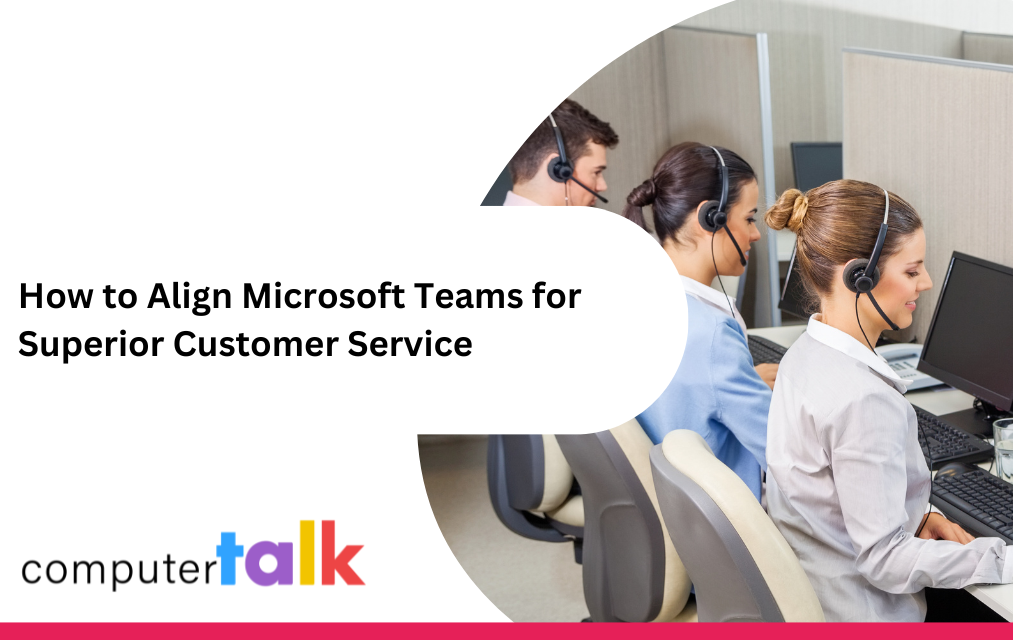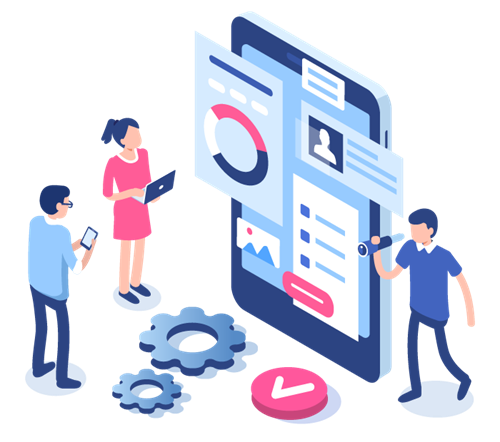Microsoft Copilot vs Agent Assist: Which is Best for Contact Centers?
by Nicole Robinson | Published On April 23, 2025

It’s safe to say that the contact center has entered its intelligent era. Artificial Intelligence has transformed from a novel concept into something that influences every customer-focused workflow and contact center application. AI isn’t just revolutionizing customer self-service either – it’s augmenting employees, giving every team member access to constant support and guidance.
Copilots and AI agent assist tools are going beyond automating repetitive work to make employees more productive, efficient, and creative in their roles. In fact, according to McKinsey, 3 times as many employees are now using AI in their day-to-day workflows.
The question for contact center leaders, is which route do you take? Do you adopt a pre-built solution like Microsoft Copilot, that already integrates with the major tools you use for productivity and collaboration, or embrace a custom-made agent assist tool for your contact center?
What is Microsoft Copilot? The Basics
Microsoft Copilot is one of the most popular generative AI assistants in the workplace today, bringing intelligent capabilities to numerous tools throughout Microsoft’s tech suite. The solution is deeply embedded into everything from Microsoft Teams and Office 365 apps, to the Dynamics 365 ecosystem, Bing search tools, and even Windows platforms.
For contact center teams, Microsoft Copilot offers an easy way for employees to access AI-powered assistance in the flow of work. Agents can connect with Copilot in Teams, Dynamics, or Outlook, asking questions about customers, products, or processes.
Copilot can draw information from various internal knowledgebases, web sources, and other existing resources, giving agents the tools they need to resolve inquiries faster. Plus, this tool can automate a range of tasks, from summarizing and transcribing calls, to drafting follow-up emails.
For both contact center agents and supervisors, Microsoft Copilot:
- Enhances productivity: With Copilot handling repetitive tasks, agents can manage higher volumes of interactions without compromising quality.
- Improves customer experiences: By giving agents access to valuable data instantly, Copilot helps to drive more personalized, engaging customer service experiences.
- Drives data-powered growth: Copilot provides insights into team performance and identifies areas for improvement, aiding in effective management.
What is an Agent Assist Tool?
Although Microsoft Copilot can be used as a tool for supporting contact center agents, it’s not the same as a traditional “agent assist” solution. Agent assist tools are AI-powered assistants that deliver real-time support and guidance, specifically to contact center agents.
Trained on customer service data, these tools act as valuable companions for agents, working with them on customer-centric processes and tasks. They can analyze ongoing conversations, offer immediate insights and real-time suggestions on how to improve customer experiences, and even help professionals track customer sentiment in real time.
Agent assist tools, such as those provided by ComputerTalk (Agent Assist), NICE (Enlighten Copilot), and Five9 (Agent Assist), are custom designed to enhance agent productivity. While the capabilities of these systems vary, many work similarly to Copilot, assisting with knowledge retrieval, real-time transcription and summarization, and content generation tasks.
Agent assist tools can even automate numerous repetitive tasks, from data entry to follow-up scheduling, reducing administrative burdens and allowing agents to use their time and energy more effectively. Plus, agent assist tools can help with workforce management, contact center routing, and in-depth business analysis.
Microsoft Copilot vs Agent Assist Tools: Key Differences
On the surface, Microsoft Copilot, and AI agent assist tools are very similar. They both help employees to unlock greater levels of efficiency and productivity, automate tasks, and ensure contact centers can make the most out of their resources.
However, there are some key differences between these solutions.
Integration and Ecosystem
First, Microsoft Copilot is a solution that’s deeply embedded within the Microsoft ecosystem, seamlessly integrating with applications like Outlook, Teams, Word, and Excel. This integration allows users to access AI capabilities directly within the tools they use every day. Copilot is great at reducing the need for agents to jump between different apps to access AI features.
In contrast, agent assist tools are often standalone solutions, built into contact center systems designed to integrate with various customer relationship management (CRM) solutions, as well as other systems. For instance, ComputerTalk’s AI agent assist tools can integrate with and draw data from numerous connected business apps, from WFM apps to ERP solutions. This gives these tools more flexibility when it comes to aligning various workflows outside of the Microsoft ecosystem.
AI Capabilities
In terms of artificial intelligence, Microsoft Copilot and modern AI agent assist tools generally use a lot of the same core technologies. Both can leverage advanced AI models and natural language processing capabilities, to enable access to features like real-time conversation summaries, sentiment analysis, and automated task management.
Microsoft Copilot, however, is largely powered by proprietary Microsoft AI solutions and Azure systems, as well as models created by OpenAI. Agent assist tools can be a little more flexible in their use of various AI models and systems. This can sometimes give organizations more freedom when it comes to customizing the capabilities and performance of their bots.
Customization and Flexibility
Contact centers need to be able to customize their AI solutions with proprietary data, workflows, and even security guardrails. Microsoft allows companies to customize elements of their Copilot experience through Copilot Studio. This low-code solution makes it easy for team members to adjust and fine-tune elements of their tools and even tap into agentic AI capabilities for Copilot.
However, while Copilot’s customization tools are intuitive and easy to use – they still don’t always give companies a lot of control over things like custom guardrails and large language models. Agent assist tools can generally deliver a higher level of customization and flexibility.
Organizations can adapt their agent assist tool to various industries and specific business processes and even infuse dedicated compliance standards. For instance, a healthcare provider might configure an agent assist tool to access medical records securely and provide real-time assistance to support staff during patient interactions.
Real-Time Assistance and Context Awareness
Both Microsoft Copilot and contact center AI assist tools benefit from always-on functionality and access to huge volumes of data. Microsoft Copilot excels in providing real-time assistance by leveraging its integration with Microsoft applications. For example, during a customer call, Copilot can access previous interactions stored in Dynamics 365, analyze the context, and provide the agent with relevant information to address the customer's concerns effectively.
Agent assist tools often integrate with the contact center, CRM, and other platforms that organizations already use, giving them access to tons of valuable data across ecosystems.
For instance, an agent assist tool integrated with a robust CRM can provide comprehensive customer insights, whereas limited integration may result in less effective assistance. These tools can also offer fantastic real-time guidance through features like live call transcription and on-the-fly knowledge base recommendations.
Scalability and Adaptability
Again, contact center agent assist tools are generally more scalable than Microsoft Copilot, because they’re not “locked” to a specific ecosystem. Microsoft Copilot can scale seamlessly to support hundreds or thousands of users across Microsoft services. Its cloud-based architecture ensures that as the organization grows, Copilot can accommodate increasing numbers of users and interactions without significant infrastructure changes.
Additionally, Copilot's adaptability allows it to support multi-channel interactions, including email, chat, and voice, ensuring consistent assistance across platforms. However, companies can’t take their Copilot solution outside of the Microsoft ecosystem.
While agent assist tools can vary in their scalability and adaptability, they’re designed to integrate and align with a wide range of contact center solutions and ecosystems. They can give organizations more freedom to expand their AI use cases over time.
Pros and Cons of Microsoft Copilot in the Contact Center
There’s no denying that Microsoft Copilot is an incredible tool for contact centers. It can deliver AI-powered efficiency, productivity, and even creativity enhancements to businesses of all sizes – but it’s not the right solution for every team.
Pros:
- Deep Microsoft Integration: Works effortlessly with Microsoft 365 apps, including Outlook, Teams, and Dynamics 365, ensuring a smooth workflow.
- Enhanced Productivity: Automates tasks like summarizing customer interactions, drafting responses, and retrieving relevant information, reducing agent workload.
- Seamless Document Handling: Quickly pulls data from emails, meeting notes, and knowledge bases to provide agents with accurate and up-to-date information.
Cons:
- Lacks Specialized Contact Center Features: Unlike dedicated agent assist tools, Copilot isn't specifically designed for contact centers, meaning it may not offer features like advanced call scripting or deep CRM analytics.
- Dependence on Microsoft Tools: Works best within the Microsoft ecosystem, which could be a drawback for businesses using other platforms like Salesforce or Zendesk.
Pros and Cons of Traditional Agent Assist Tools
Traditional agent assist tools are AI-driven solutions specifically designed to enhance contact center operations. They provide real-time support to agents, improving efficiency and customer satisfaction. However, like any technology, they come with their own set of pros and cons.
Pros:
- Purpose-Built for Contact Centers: These tools are specifically designed to address the unique challenges of contact centers, offering features that cater directly to the needs of customer service operations.
- Real-Time Call Analytics: They provide immediate insights during customer interactions, allowing agents to adjust their approach on the fly for better outcomes.
- Better Third-Party Integrations: Traditional agent assist tools often offer robust integration capabilities with various CRM systems and other platforms, ensuring a seamless workflow across different tools.
Cons:
- Additional Setup Requirements: Implementing these tools may require significant setup and customization to align with existing systems and processes.
- Potential Compatibility Issues: There can be challenges in ensuring these tools work harmoniously with existing workflows.
Which One is Right for Your Contact Center?
So, which is better for your contact center – Microsoft Copilot or dedicated agent assist tools? It all depends on your goals and priorities. Here are a few things that we recommend considering when you’re exploring your AI options:
- Business Size: If you’re running a small organization and you already use a lot of Microsoft 365 applications, integrating Copilot could be a cost-effective option. Alternatively, larger organizations with more complex contact center operations may benefit from the specialist functionalities and customization capabilities of agent assist tools.
- Industry considerations: Sectors like healthcare and finance often have stringent regulatory standards. Dedicated agent assist tools can be customized to ensure compliance, offering features like secure data handling and industry-specific workflows. Businesses without specialized compliance needs may benefit from Microsoft Copilot's broad capabilities, especially if they are already embedded within the Microsoft ecosystem.
- Existing Technology: Obviously, if your organization already uses a lot of Microsoft products, embracing Microsoft Copilot is a no-brainer. However, if you’re using a variety of platforms, agent assist tools will be a lot more adaptable and flexible.
Consider Microsoft Copilot if you have a strong existing investment in Microsoft technologies, like Microsoft Teams, Office 365, and Dynamics. It’s great for streamlining workflows and improving overall productivity.
Alternatively, if you’re looking for a more flexible, versatile solution that can integrate with multiple platforms and apps and deliver specialized features, a dedicated agent assist tool will always be the best bet. It might require a higher investment initially, but the ROI should be incredible.
Embracing AI in the Contact Center with Agent Assist Tools
AI solutions are more than just a powerful way for companies to upgrade their customer self-service strategies. Solutions like Microsoft Copilot and agent assist tools give every organization a chance to augment their human employees, enhancing their creativity, productivity, and efficiency.
Looking ahead, demand for agent assist tools and solutions like Copilot will only continue to grow as businesses search for new ways to reduce operational costs, automate time-consuming tasks, and enhance customer experiences across channels.
Now is the perfect time to start exploring the options that could take your contact center team to the next level. If you’re ready to experiment with the benefits of a dedicated agent assist tool, built specifically for contact centers, contact ComputerTalk today.
Our new agent assist solution is designed to help your teams accomplish more with less – streamlining repetitive processes, improving data insights, and boosting operational efficiency. Put it to the test for yourself today, by booking a free demo.
More from our blog
 Whether your interests are in Application Development (AD), Quality Assurance, or Product Engineering, there are many opportunities available at ComputerTalk.
Whether your interests are in Application Development (AD), Quality Assurance, or Product Engineering, there are many opportunities available at ComputerTalk.
 Explore how Microsoft Teams revolutionizes customer service in contact centers, fostering enhanced interaction, collaboration, and customer satisfaction.
Explore how Microsoft Teams revolutionizes customer service in contact centers, fostering enhanced interaction, collaboration, and customer satisfaction.
 Spring is upon us, and that means it’s time for some spring cleaning! This is a great way to refresh, reset, and make sure everything is ready and optimized for the season ahead.
Spring is upon us, and that means it’s time for some spring cleaning! This is a great way to refresh, reset, and make sure everything is ready and optimized for the season ahead.

